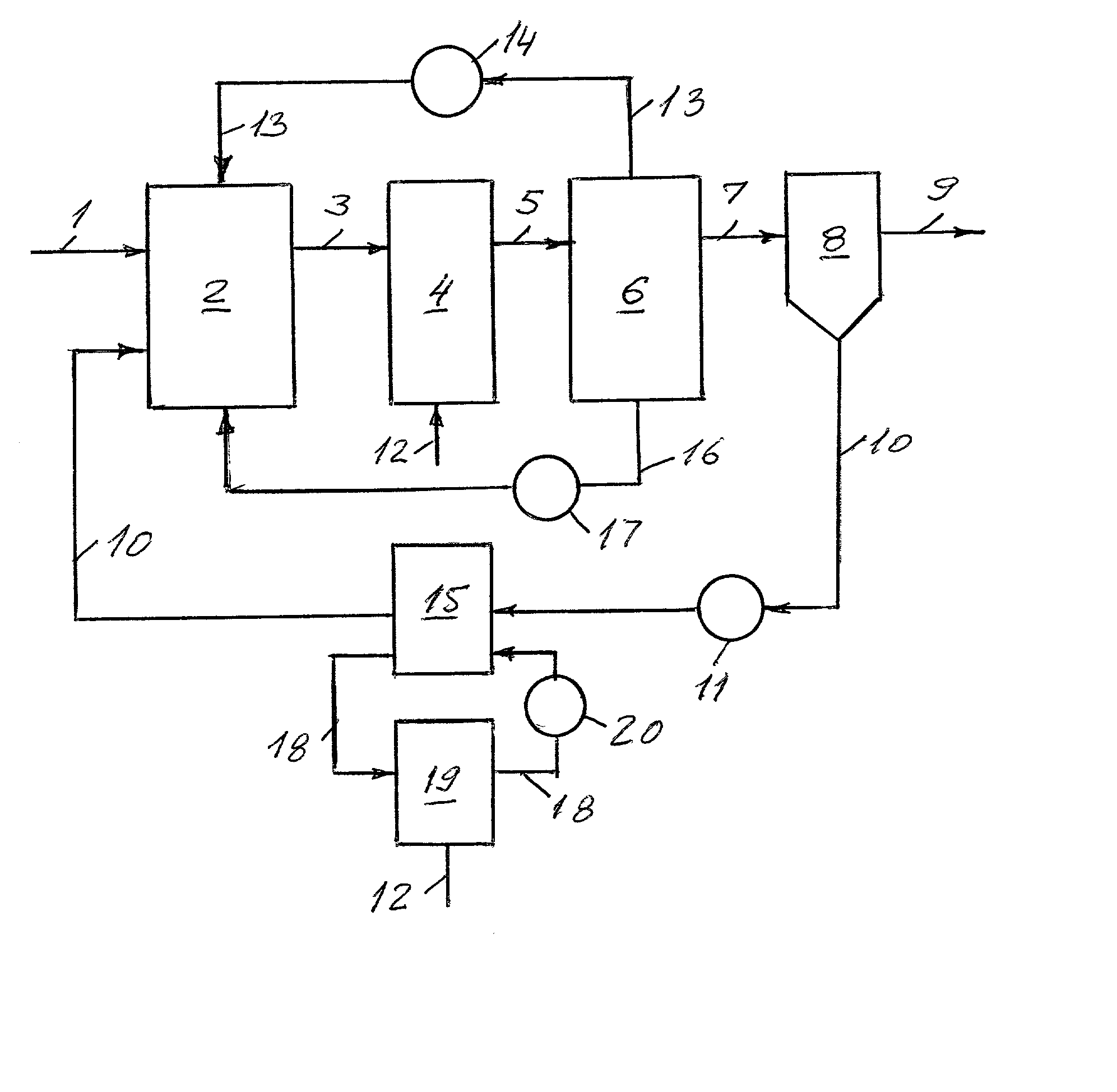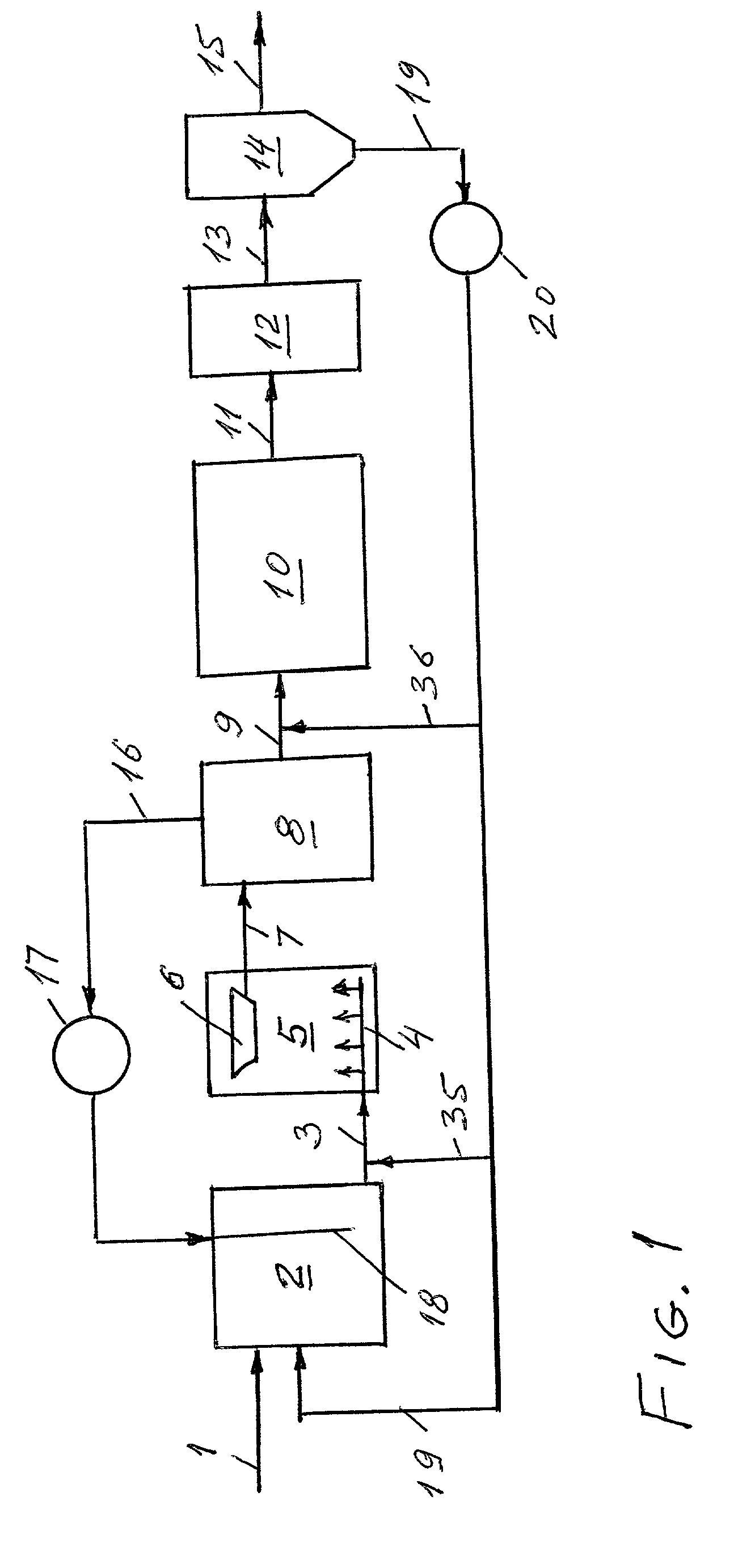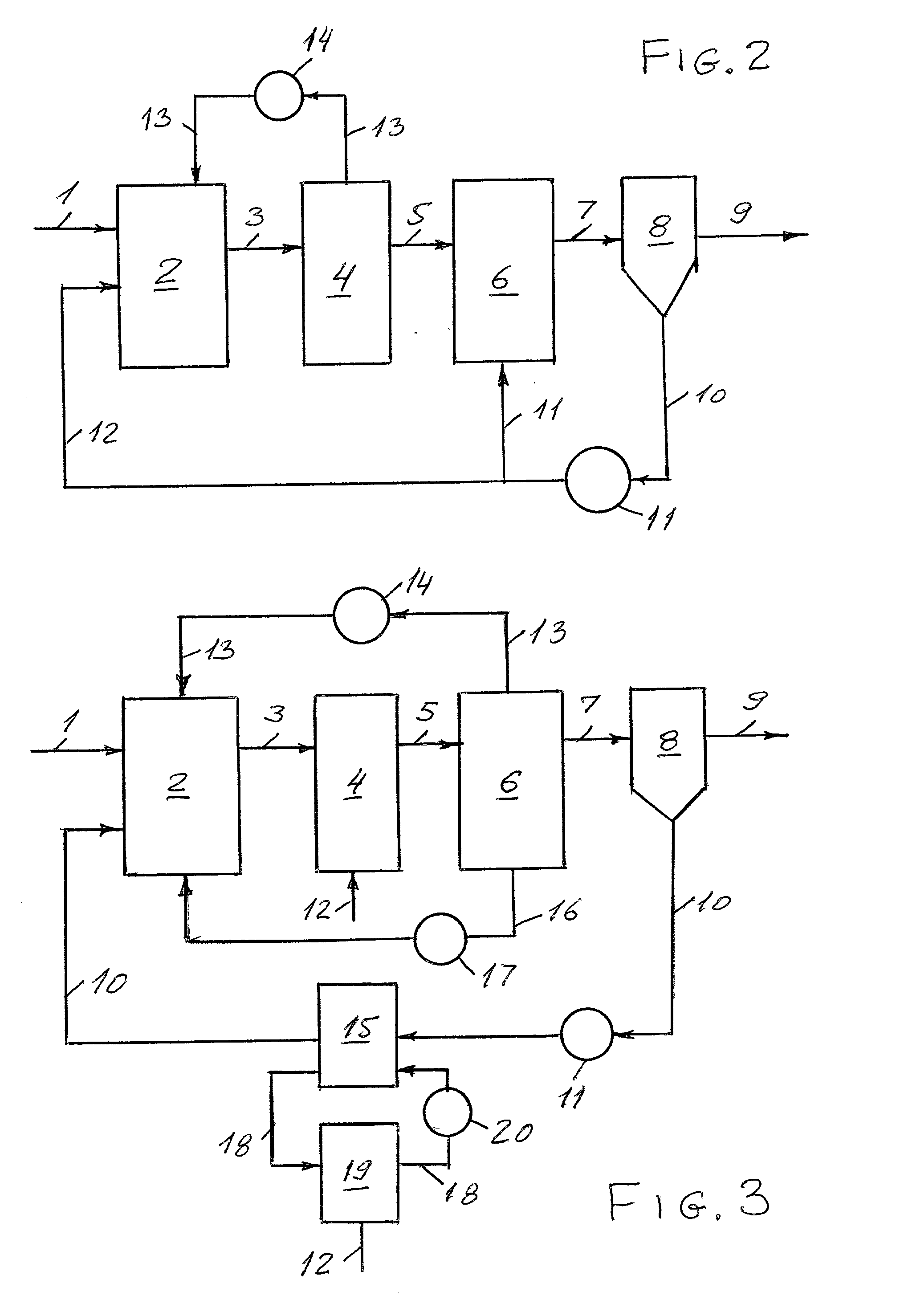Volatile acid transfer in biological-abiotic processes
a biological abiotic and volatile acid technology, applied in biological water/sewage treatment, multi-stage water/sewage treatment, water/sewage treatment by degassing, etc., can solve the problems of complex process and control, increased salt content in treated effluent, and additional capital and operating costs
- Summary
- Abstract
- Description
- Claims
- Application Information
AI Technical Summary
Problems solved by technology
Method used
Image
Examples
Embodiment Construction
[0014] Referring now to FIG. 1, there is shown a biological-abiotic treatment system for phosphorus removal having influent line 1, a facultative (also called anaerobic) step 2 with elevated acidity and / or reduced pH, a line 3 connecting step 2 to an anaerobic process step 5 having a liquid distribution means 4 and, optionally, means 6 for collecting the clarified anaerobic effluent, a line 7 connecting step 5 to a de-acidification step 8 for the removal of the volatile acids from the liquid, a line 9 connecting step 8 to an aerobic step 10, a line 11 connecting said aerobic step 10 to step 12 for the thorough removal of the volatile acids from the treated liquid, a line 13 connecting step 12 to a sludge (biomass) separation step 14, and effluent line 15, a line 19 with a lifting means 20 for recycling at least a portion of the separated biomass to step 2, optionally, biomass can also be recycled to steps 5 and 10 via branches 35 and 36, and a portion of biomass can be wasted (not s...
PUM
| Property | Measurement | Unit |
|---|---|---|
| pH | aaaaa | aaaaa |
| temperature | aaaaa | aaaaa |
| oxidation-reduction states | aaaaa | aaaaa |
Abstract
Description
Claims
Application Information
 Login to View More
Login to View More - R&D
- Intellectual Property
- Life Sciences
- Materials
- Tech Scout
- Unparalleled Data Quality
- Higher Quality Content
- 60% Fewer Hallucinations
Browse by: Latest US Patents, China's latest patents, Technical Efficacy Thesaurus, Application Domain, Technology Topic, Popular Technical Reports.
© 2025 PatSnap. All rights reserved.Legal|Privacy policy|Modern Slavery Act Transparency Statement|Sitemap|About US| Contact US: help@patsnap.com



